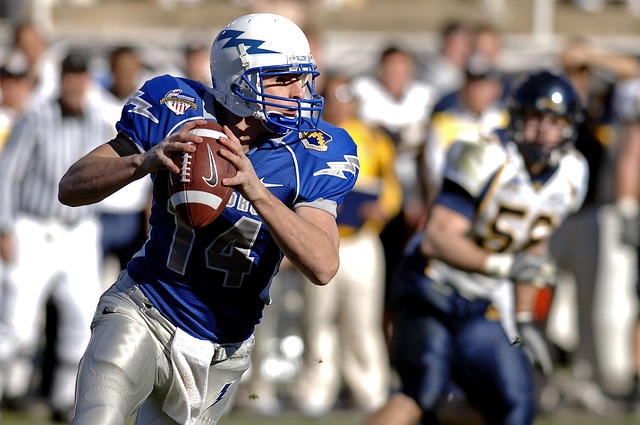
Are you ready to take your athletic training to the next level?
In this article, we will unveil the secrets of mastering performance and help you unlock your full potential.
From setting clear goals and developing a consistent training routine, to fueling your body with proper nutrition and honing your mental preparation techniques, we will guide you through every step of the way.
Get ready to discover the art of athletic training like never before and unleash the freedom within yourself.
Key Takeaways
- Set specific, measurable goals and allocate time effectively for structured training
- Establish a consistent training routine with regular sessions for progress
- Prioritize nutrition and hydration strategies for optimal performance
- Practice mental preparation, visualization, and relaxation techniques for peak performance
Setting Clear Goals and Objectives
You need to set clear goals and objectives in order to achieve success in athletic training. Tracking progress is essential for measuring your improvement and ensuring that you stay on track towards your desired outcome.
By setting specific, measurable goals, you can evaluate your performance and make necessary adjustments along the way.
Time management is another crucial aspect of goal-setting. Allocating time effectively allows you to prioritize tasks, create a structured training schedule, and maximize productivity. It also helps prevent burnout by balancing training with rest and recovery periods.
When setting goals, it's important to be realistic yet ambitious. Aim high but ensure that your objectives are attainable within a reasonable timeframe.
Ultimately, clear goals and effective time management are key ingredients for unlocking your full athletic potential.

Developing a Consistent Training Routine
Establishing a regular training regimen is crucial for consistent progress in athletics. Building endurance and incorporating strength training techniques are key elements to include in your routine.
To build endurance, focus on activities that elevate your heart rate for an extended period of time, such as running, cycling, or swimming. Gradually increase the duration and intensity of these exercises to challenge your cardiovascular system and improve stamina.
Incorporating strength training techniques will help enhance muscle tone and power. Include exercises like squats, lunges, push-ups, and planks to target different muscle groups and promote overall body strength.
Consistency is key when it comes to training; aim for at least three to four sessions per week with rest days in between to allow your body time to recover and rebuild.
Remember, by establishing a consistent training routine that includes building endurance and strength training techniques, you'll be well on your way to mastering performance in athletics.
Proper Nutrition and Hydration
To ensure optimal athletic performance, it's important to maintain proper nutrition and hydration.
Nutrient timing plays a crucial role in fueling your body for exercise. Before a workout, focus on consuming carbohydrates to provide energy and prevent fatigue.
During exercise, replenish electrolytes with sports drinks or coconut water to stay hydrated and maintain muscle function.
After your workout, prioritize protein intake to aid in muscle recovery and repair.

Hydration techniques are equally important in maximizing performance. Drink water throughout the day, not just during workouts, to avoid dehydration. Pay attention to urine color - a pale yellow indicates proper hydration while dark yellow suggests dehydration.
Remember that every athlete is unique, so experiment with different nutrition strategies and listen to your body's signals for what works best for you.
Stay fueled and hydrated to unleash your full potential!
Mental Preparation and Visualization Techniques
Mental preparation and visualization techniques are important for enhancing athletic performance. By harnessing the power of the mind-body connection, athletes can tap into their full potential and achieve peak performance.
Here are four key strategies to help you overcome performance anxiety and unlock your athletic greatness:
Positive Self-Talk: Replace self-doubt with empowering thoughts and affirmations. Remind yourself of past successes and believe in your abilities.
Mental Rehearsal: Visualize yourself executing flawless movements and achieving your goals. Imagine every detail, from the smell of the field to the cheers of the crowd.
Breathing Exercises: Deep, rhythmic breathing calms nerves and focuses the mind. Take slow breaths in through your nose, hold for a moment, then exhale through your mouth.
Relaxation Techniques: Incorporate meditation or progressive muscle relaxation into your routine to reduce tension and promote mental clarity.

By incorporating these techniques into your training regimen, you will cultivate a strong mindset that allows you to conquer any challenge on your path to athletic success.
Embrace freedom by mastering both body and mind!
Injury Prevention and Recovery Strategies
Try incorporating proper warm-up and cool-down routines into your workouts to prevent injuries and promote faster recovery.
Start by warming up with dynamic stretches and exercises that mimic the movements you'll be doing during your workout. This will increase blood flow to your muscles, improve flexibility, and prepare your body for the demands ahead.
After your workout, don't forget to cool down with static stretches to help reduce muscle soreness and increase flexibility.
Injury prevention goes beyond just warm-ups and cool-downs. It also involves sports-specific conditioning and rehabilitation exercises. By focusing on strengthening the muscles used in your sport or activity, you can decrease the risk of injury.
Rehabilitation exercises are essential if you're recovering from an injury or trying to prevent one from recurring. These exercises target weak or imbalanced areas of the body, helping to restore strength, stability, and mobility.
Remember, taking care of your body is crucial for optimal performance. Incorporating these strategies into your training routine will not only keep you injury-free but also enhance your overall athletic ability.
Frequently Asked Questions
How do I balance my training routine with work and other commitments?
To balance your training routine with work and other commitments, prioritize your tasks and create a schedule. Use effective time management techniques like setting goals, breaking tasks into smaller steps, and delegating when possible. Remember to take breaks and make time for self-care.

What are some effective mental techniques for staying focused during training sessions?
To stay focused during training sessions, visualize yourself achieving your goals. Use breathing techniques to calm your mind and center your focus. These mental techniques will help you stay engaged and perform at your best.
Are there any specific nutrition and hydration guidelines for athletes with dietary restrictions?
For athletes with dietary restrictions, it's important to follow specific nutrition and hydration guidelines. Proper nutrition and hydration are crucial for optimal performance and recovery. Prioritize your unique needs to fuel your body effectively.
How can I prevent burnout and maintain motivation throughout my training?
To prevent burnout and maintain motivation, prioritize self-care by setting realistic goals, taking regular breaks, and engaging in activities you enjoy. Stay connected with a supportive community and celebrate your progress to keep the fire burning.
Are there any alternative recovery strategies or techniques that can aid in injury prevention and rehabilitation?
To prevent injuries and aid in recovery, explore alternative techniques such as foam rolling, active stretching, and cold therapy. These methods can improve flexibility, reduce muscle soreness, and increase blood flow for faster healing.
 SportsHollywoodLifestyleFashionHome & GardenTrendsPrivacy PolicyTerms And Conditions
SportsHollywoodLifestyleFashionHome & GardenTrendsPrivacy PolicyTerms And Conditions
